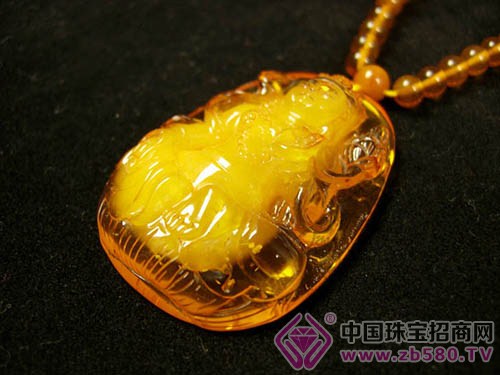Hard resin is a semi-petrochemical resin with a very new geological age and has similar composition to amber. However, the hard resin does not contain succinic acid and has a higher volatile content than amber. Its physical properties are similar to those of amber, but are more susceptible to chemical attack. A small drop of ether is applied to the surface of the hard resin and rubbed by hand. The hard resin softens and sticks, and amber does not. The hard resin exhibits strong white fluorescence under UV light, especially under short-wave UV lamps. When contacted with a hot needle, the hard resin is more easily melted than amber. When testing by this method, a piece of amber and a piece of hard resin must be used as a standard. The hard resin is more brittle and its surface is more susceptible to cracking than amber. Hard or resin may also be wrapped in natural or artificially placed animals and plants. rosin Rosin is a kind of non-geological resin. It is light yellow, opaque, resinous, light in weight and low in hardness. It can be kneaded into powder by hand, and the relative density is close to 1.05. There are many oil droplets on the surface, which have poor thermal conductivity and strong yellow-green fluorescence under short-wave ultraviolet light. It smells aromatic when burned. Coba resin Most similar to amber, it is a resin with a very close geological age. It is not sensitive to petrochemical or chemical corrosion. A drop of ether is dropped on the surface and rubbed with a finger to quickly show sticky spots. Coba resin is more sensitive to alcohol, becomes sticky or opaque after dripping alcohol on the surface, and has an alcohol-like dissolution reaction in glacial acetic acid. However, this method does not respond to petrochemical resins and hard resins with older geologic ages. In short-wave UV light, Coba resin emits white fluorescence, which is brighter than natural amber. Coba resin can contain animal and plant inclusions, and the infrared spectrum of Coba resin is quite different from that of amber. Plastic Early plastic imitation amber had a distinct flow structure and was easier to distinguish, but recent plastic products can not only imitate the color of amber, but also create disc-like cracks that are very similar to "sun rays", making it more realistic. These plastics are very similar in color, warmth and electrical properties to amber, but the refractive index and density are quite different from amber. Plastics are cleavable. When a knife is used to cut the inconspicuous part of the sample, it will peel off, while amber will produce a small gap. With the hot needle test, the plastic will have various odors, while the amber can give the fragrant smell of rosin burning. The phenomenon of burning will be different, the plastic will melt, and the amber will only leave burnt spots. Carefully Crafted Cushion,Jacquard Cushion Cover,Stock Jacquard Cushion,Outdoor Jacquard Cushions SHAOXING NINGBO DECORATTION FABRIC FACTORY , https://www.curtaincushion.com